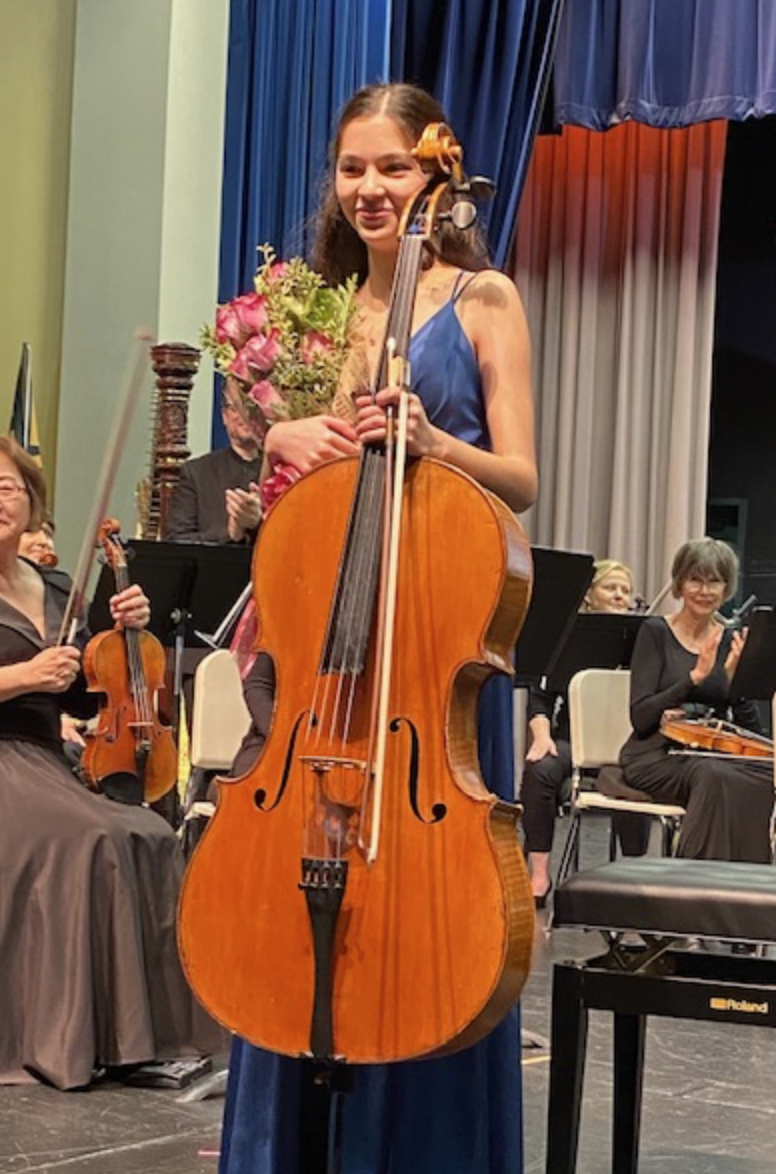|
Symphony
FROM THE NEW WORLD TO THE OLD WORLD
by Peter Lert
Saturday, June 14, 2025
Chamber
MC2 DUO RECITAL CLOSES 222'S SEASON
by Terry McNeill
Saturday, June 14, 2025
Choral and Vocal
CANTIAMO SONOMA'S LUSCIOUS A CAPELLA SINGING IN SEASON ENDING CONCERT
by Pamela Hicks Gailey
Sunday, June 8, 2025
Symphony
SRS SEASON ENDS WITH RESOUNDING TA-TA-TA-BANG
by Terry McNeill
Sunday, June 1, 2025
Symphony
YOUTHFUL VIRTUOSITY ON DISPLAY AT USO'S MAY CONCERTS
by Peter Lert
Saturday, May 17, 2025
Symphony
MYSTICAL PLANETS AND LIVELY GERSHWIN ORTIZ AT FINAL SRS CONCERT
by Peter Lert
Sunday, May 4, 2025
Symphony
VSO'S CONCERT MUSIC OF TIME, MUSIC OF PLACE
by Peter Lert
Sunday, April 27, 2025
VOCAL ELEGANCE AND FIRE AT THE 222'S RECITAL APRIL 26
by Pamela Hicks Gailey
Saturday, April 26, 2025
CANTIAMO SONOMA SINGS AN INSPIRED GOOD FRIDAY MOZART REQUIEM CONCERT
by Pamela Hicks Gailey
Friday, April 18, 2025
DRAMATIC SHOSTAKOVICH SYMPHONY CLOSES PHILHARMONIC'S 25TH SEASON
by Terry McNeill
Sunday, April 13, 2025
|
 |
 Cellist Starla Breshears |
PROFOUND SCHUMANN CONCERTO PERFORMANCE BY BRESHEARS AT THE JACKSON
by Terry McNeill
Sunday, October 29, 2023
A definition of great music is that it enters the ear with ease and leaves the mind with difficulty. That definition was on my mind Oct. 29 when the Sonoma County Philharmonic played its second concert of the season, with the themes of Schumann’s A Minor Cello Concerto staying in my mind for two days, and presumably for scores of the 250 happy attendees in the Jackson Theater.
The So Co Phil has an agreement with the San Francisco Conservatory of Music to engage a prize-winning student soloist, and this afternoon cellist Starla Breshears from the Conservatory gave a polished and masterful reading of the enigmatic Schumann work from 1860. Conductor Norman Gamboa gave free interpretative rein to youthful musician, and she delivered a deft and sterling reading, full of powerful thematic projections, tasteful vibrato, just a tad of portamento and elegant phrasing. Intonation was perfect, clean upward scales and a spiccato when the music needed it, especially in the lively finale.
The short orchestra interlude leading into the spiritual Langsam slow movement was played heavenly.
Many famous concertos have subsidiary parts and motives, but in the Schumann every note is poetry and heartfelt affection, both splendidly captured by the Orchestra and the consummate cellist. The composer might have said "ausgeseichnet." A rousing standing ovation erupted at the end. There was no encore (St. Saëns pensive “swan”?).
Glazunov’s B-Flat Major Symphony (No. 5) occupied the concert’s second half, a 35-minute expansive reading by Mr. Gamboa and his ensemble. In this hall, as well as in Weill, this reviewer finds symphonic music heard best in the balcony. However, for various reasons I was close to the stage and the conductor’s usual control of individual instrumental sections and distinct melding of the musical fabric was missing due to the seat proximity to the players. Not to worry, there was plenty of warm and vibrant sound. This music tells a story that is different from Tchaikovsky or Rubinstein’s symphonies, or Rimsky Korsakov. Russians to the fore.
Especially convincing was the skittish scherzo with lots of pizzicato, flute and piccolo playing by Debra Scheuerman and Mary Kemnec, Chris Krive’s oboe line, and bottom string section continuo. The third movement was played in a slow waltz tempo, with substantial pauses between sections, and solos from clarinet (Mary Kruzas), tubist Floyd Reinhart and harpist Christina Goodwin. The bass drum and triangle added charm.
The triumphal finale (Allegro Maestoso) had the requisite momentum with the telling three-note phrases in frequent repetition, Mr. Gamboa sculpting the music and occasionally holding back in several climaxes.
Liszt’s third Tone Poem Les Préludes (“beginnings”) opened the concert, and Mr. Gamboa noted in remarks from the stage that he conducted the work in one of his first concerts as a conductor 30 years ago. That said, he chose a lugubrious tempo that robbed the once-popular 1854 work of freshness and efficacy. The many rolling climaxes lacked the needed sonic power and overall cohesiveness was in scant supply. Horn playing was everywhere energetic.
Attendance at these concerts seems to be growing, and the Philharmonic is attracting new group groups to at least their Sunday afternoon performances. They play Copland’s Third Symphony, a saxophone concerto and local composer Michael Daugherty’s new “Route 66” Jan. 27 and 28.
|

